Andamans. Long road to home
Neill Island - Port Blair - Delhi - Bishkek
From the book "Straight to the South", part 3 "Visiting a sea cow", episode 25.
| 28-30.03.2018 |
This is final story of our journey straight to the South. It tooks three days to get home.
On March 28th we woke up very early, at 3 am, because we were going to go to the South-Eastern beach of the Neill Island, it is called Sitapur Beach or just the beach #5. It is about 6 km from our hotel, a tuk-tuk requested 800 rupees for round-trip delivery and waiting. Expensive, but they have such prices, you will hardly find cheaper. Also he had to get up in the middle of the night... We drove in complete darkness.
People gather here, as well as on a sunset beach, to watch a performance organized by nature.
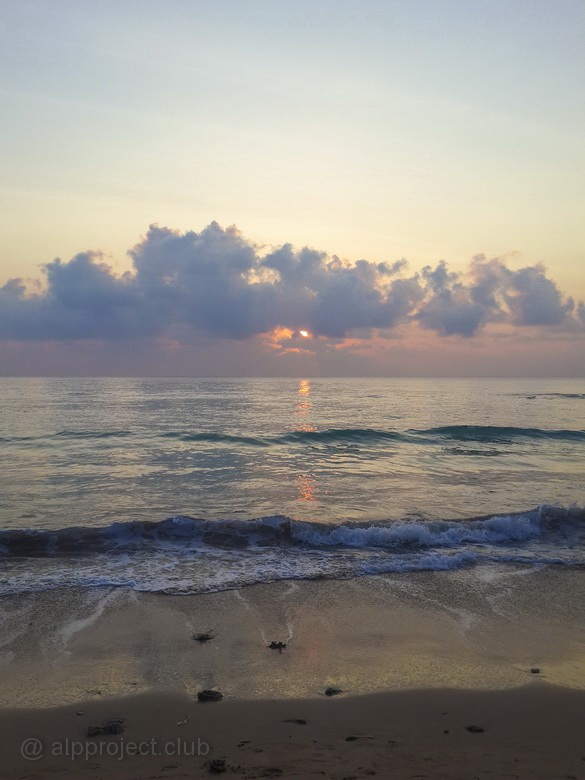
Andamans. Who is looking will always find
Neill Island
From the book "Straight to the South", part 3 "Visiting a sea cow", episode 24.
| 25-27.03.2018 |
East entrance to the strait between Havlock and Neill Islands. This place was explored by our guide Dharmesh, he considers that it is his personal finding.
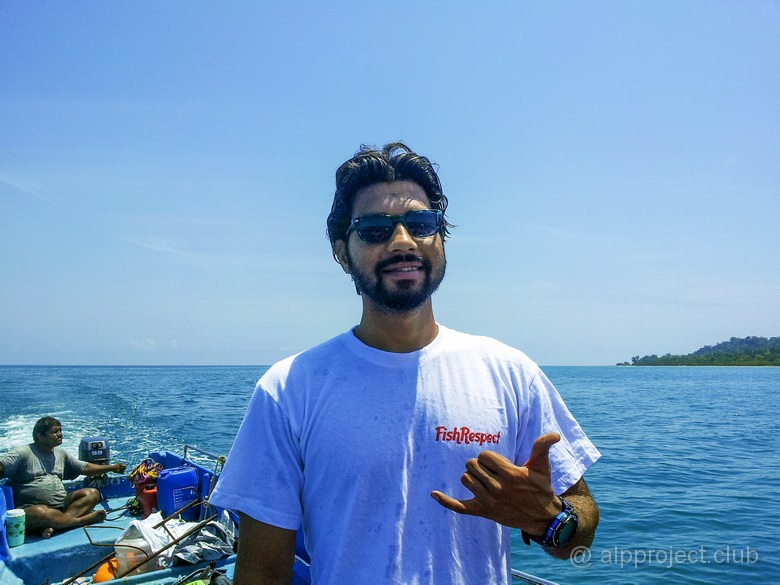
Andamans. Clean water
Neill Island
From the book "Straight to the South", part 3 "Visiting a sea cow", episode 23.
| 25-27.03.2018 |
The Neill and Havelock Islands are separated by a strait with a width of over 4 km, sometimes manta ray come there, but we were not lucky to meet them. But when diving on the dive site "Junction"(11°52'7.50"N 93° 1'3.40"E) we immediately saw a large Napoleon fish. Then there were groupers and sweetlips, fan corals gorgonians covered with sea lilies, titan triggerfish and blue-dotted stingray, boxer shrimps, scorpionfish... The water is clear, visibility is about 20-30 meters - we'd dived with pleasure.
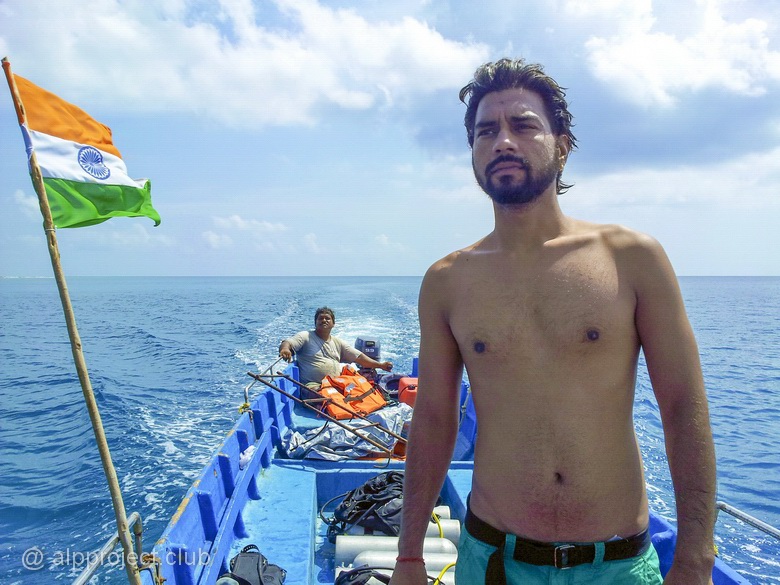
Our dive-guide Dharmesh
Andamans. 12 years into the past
Neill Island
From the book "Straight to the South", part 3 "Visiting a sea cow", episode 22.
| 24-27.03.2018 |
The transition between the Havelock and the Neill Islands by the sea ferry "Makruzz" took an hour and a half, the time flew by - we were "attacked" by friendly Indian tourists. Acquaintances, talking, photo shooting…
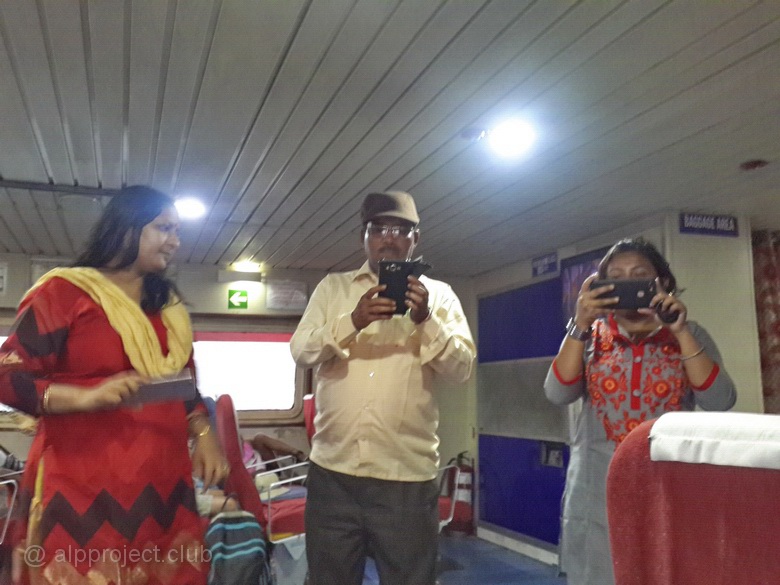
Andamans. The tops of the seas
The Andaman sea pinnacles
From the book "Straight to the South", part 3 "Visiting a sea cow", episode 21.
| 20-23.03.2018 |
The best dive sites near of Havelock Island are undoubtedly the tops of small underwater volcanoes in the open Andaman sea. The current-borne spores of coral polyps are searching hills on bottom of the sea to hook, then establish their colony, grow, bloom and provide food to marine life. Even deep-sea large predators sometimes come up here to eat. Therefore, divers have a chance to see all them at once in such places.
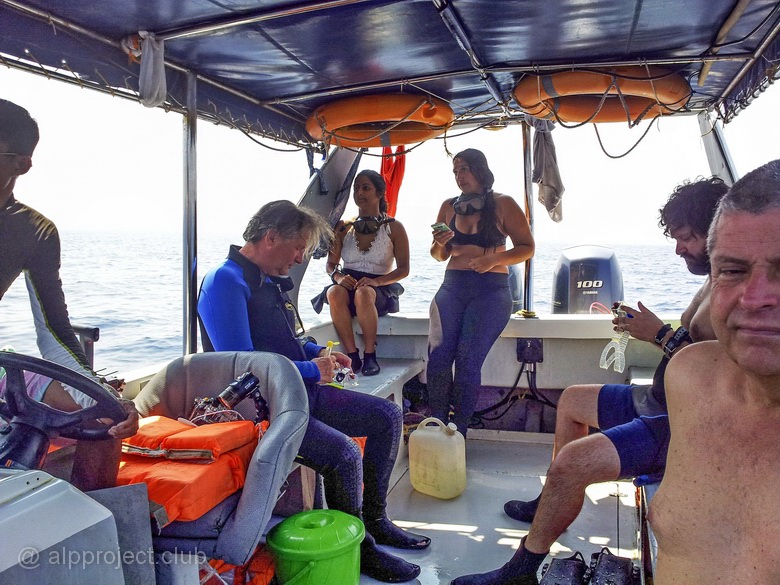
On the boat before the dive
Andamans. Island of permitted tourism
Radhanagar Beach (beach #7)
From the book "Straight to the South", part 3 "Visiting a sea cow", episode 20.
| 23.03.2018 | 11°59'2.46"N 92°57'10.58"E |
I have already said that the Islands of the Andaman archipelago are mostly protected, but they have allowed tourism to develop on Havlok Island. We had no time to observe the island in details - we spent the most of the time under water, but we considered mandatory to visit the beach #7. This is almost the best sandy beach on the Andaman, where you can swim without the risk of getting hurt on the coral, even at low tide. The road there crosses the island from North to South, among the villages and fields, it is getting worse as we approach a small pass. The way takes about 40 minutes, our tuk-tuk puffs and presses hard to the side, passing the counters... And here is the descent, a little more shaking and we are on the beach.
It is large, stretching for a couple of kilometers and it is really sandy. Its official name (Radhanagar Beach) is not known to everyone, here the beaches are assigned numbers. We got here in the late afternoon. Despite its remoteness, the beach was filled with people, the vast majority of visiting tourists - Indians. Few of them risk to go far into the water, but they love to splash in shallow water and sit on the sand, especially the kids. Here is the atmosphere of a quiet family holiday, all people in a good mood and happy to touch the clear blue sea…
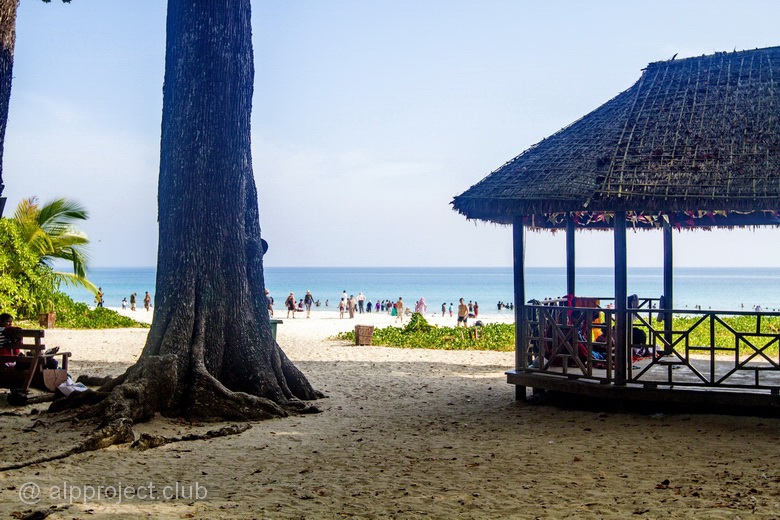
Andamans. Underwater over a rock
White House Rock dive site
From the book "Straight to the South", part 3 "Visiting a sea cow", episode 19.
| 21.03.2018 | 12° 1'19.40"N 92°48'2.60"E |
A long journey of 20 km by sea, we crossed by boat the strait between the chain of the main islands of the archipelago and smaller islands, such as our Havelock.
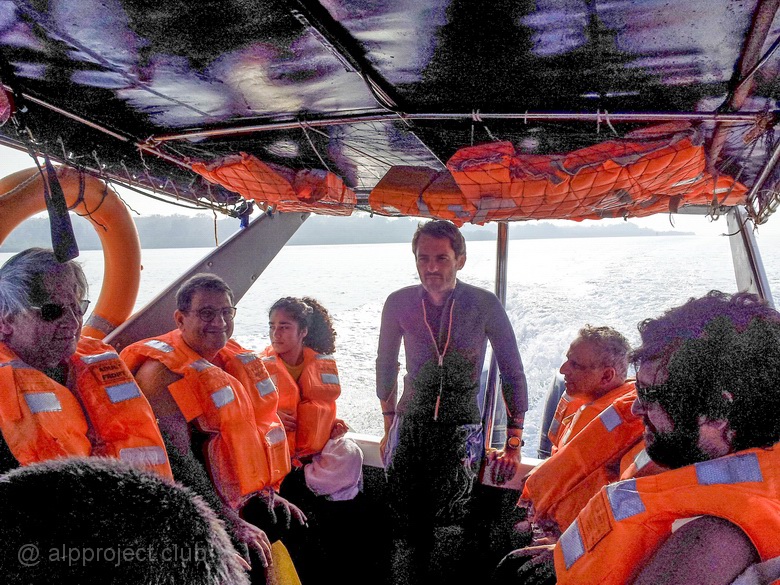
Andamans. In tides and in straits
The shelf of Havelock island
From the book "Straight to the South", part 3 "Visiting a sea cow", episode 18.
| 19-24.03.2018 |
Disappointment #2: there are no beaches on Havelock Island. At least in the Northern part of it. Well, they are and even are numbered - there is no water there. It appears at the shore only at the moments of tides, to catch it is not always possible, often you have to admire the small puddles with clumsy corals sticking out on the surface. To walk on them without shoes is impossible, to get to some place where you can swim - the problem.
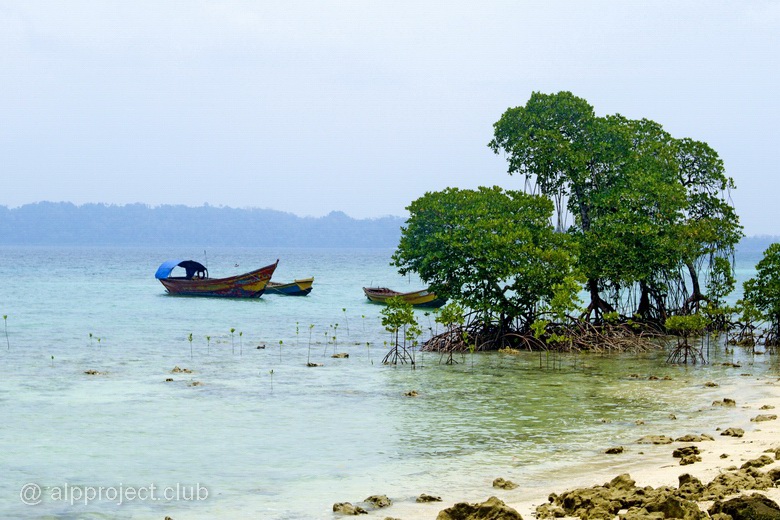
Andamans. In the capital city
From the book "Straight to the South", part 3 "Visiting a sea cow", episode 17.
| 18.03.2018 |
Andamans and Nicobars are the meeting place of Eurasia with India and Australia. Meridional elongated chain of fragments of land was appeared at the junction of the global lithospheric plates, separating the two basins – the Bay of Bengal in the West and the Andaman sea in the East. The result of lapping three platforms to each other - tectonic scales, partially or completely melted, they are a crystal base for the local islands. The process began only 38 million years ago (compared to the age of the Earth - more than 4.5 billion years - it is like yesterday) and still lasts. There are frequent earthquakes there, carrying with them the devastating tsunami waves, and there are active volcanoes sticking out of the sea, spewing lava nozzles, on the Eastern flank of the island system. It is restless, in general.
In my article about Sri Lanka, I wrote that the first settlers there were immigrants from Africa, who migrated to the East in ancient times. On the Andamans, this theory is confirmed: initially the islands were inhabited by ancient African colonizers of Asia. They are called "negrito", spanish for "little blacks", it is a generalized designation of people Negresco type of the Melanesian race, Asian and Australian pygmies. It is believed that they have a unique innate ability to biolocation - they can to determine where any animal locates at a considerable distance, like a radar. Their growth below 150 cm, the skin is very dark.
Black little men have been known since the Roman Empire, but they had a bad reputation. Marco Polo, for example, called them cannibals with a dog face. However, researchers of the early XX century left the following records: "This is a loyal and gentle married couples, they are not cannibals, they do not hide in earthen burrows, like rabbits, they do not roast pigs in tree hollows. They believe that Peluga lives in the sky - an invisible creature that lives in a stone house. This deity has created everything except evil spirits, whose power cannot be resisted."
The fate of the four tribes known in the Anamans is sad: they lived at the level of the stone age, they suffered from viruses brought by foreigners, to which they had no immunity, were exterminated by English colonizers, they died in the waves of a giant tsunami, but continued to persist in preserving their world, resolutely and aggressively protecting it from aliens.
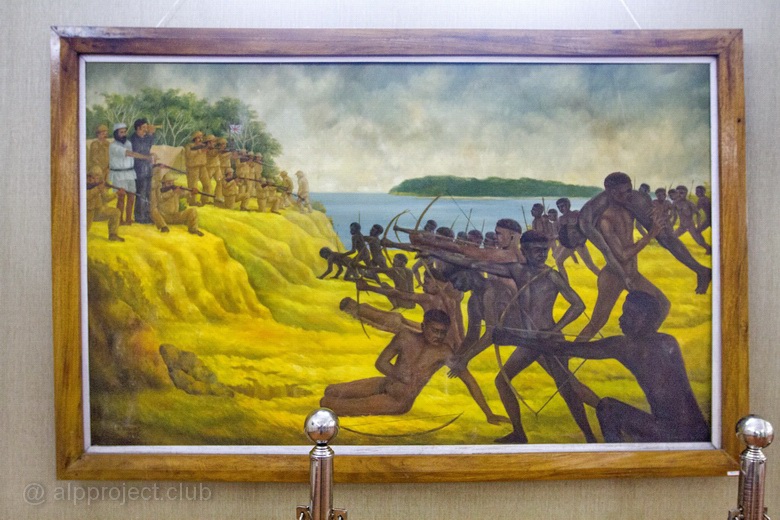
20180509 Immortal regiment. Bishkek, Kyrgyz Republic
Immortal regiment. Bishkek, Kyrgyz Republic. May 9, 2018
Maldives. Flying to India
(Flights Gan – Male – Colombo – Chennai – Port Blair)
From the book "Straight to the South", part 2 "Shark archipelago", episode 16.
17-18.03.2018
What a day! Together with the next night it was the hardest day on our trip. Rise in 3 o'clock in the morning, load suitcases on "doni", 10-15 minutes to the pier, transportation of luggage to the tiny airport Gan.. No a big problem, but we wanted to sleep brutally. And that also was disappointed that there is a direct flight of Sri Lankan airlines to Colombo from Gan, and we could save time and money if we would know about it.. But, to be honest, I did not even bother to study our route in advance, and I could not even imagine that we can fly directly to Colombo from such tiny Maldivian island. As a result, we boarded the Dash-8 200 twin-engine airplane at 5:45. We slept in flight, only sometimes for a moment opening our eyes and admiring the beauty of the heavens above the ocean..
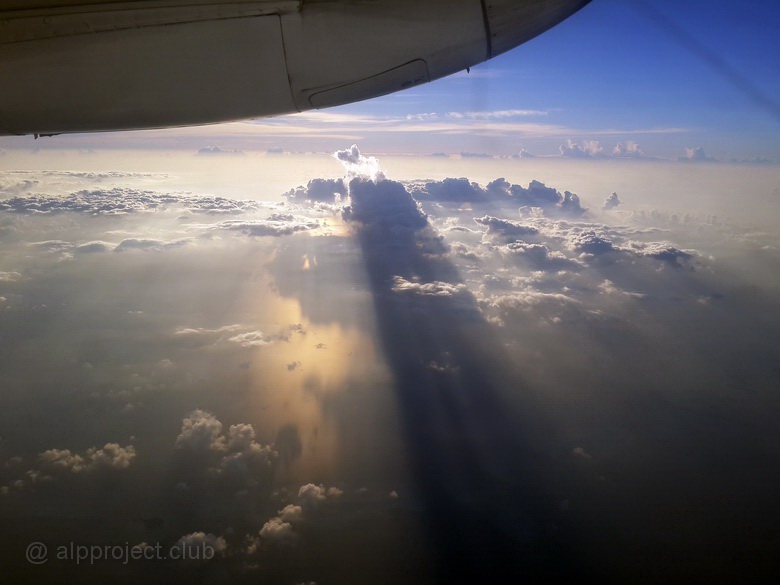
Maldives. Like birds
From the book "Straight to the South", part 2 "Shark archipelago", episode 15.
| 16.03.2018 | 0°36'37.10"S 73° 9'11.80"E |
We stand in Addu atoll, the southernmost in the Maldives. There is only open ocean to the South from it to 7500 km to Antarctica. Tomorrow early morning we'll depature to Male and the safari ends.
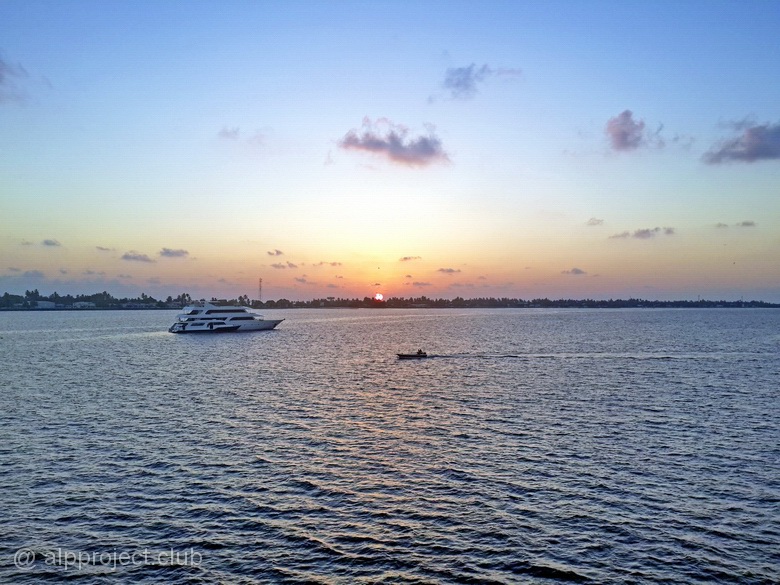
Maldives. Dangerous as tigers
From the book "Straight to the South", part 2 "Shark archipelago", episode 14.
| 15.03.2018 | 0°19'29.80"S 73°26'54.50"E |
Early in the morning, we are in a new place, latitudeis about 19 minutes South from the equator - we crossed it at night.
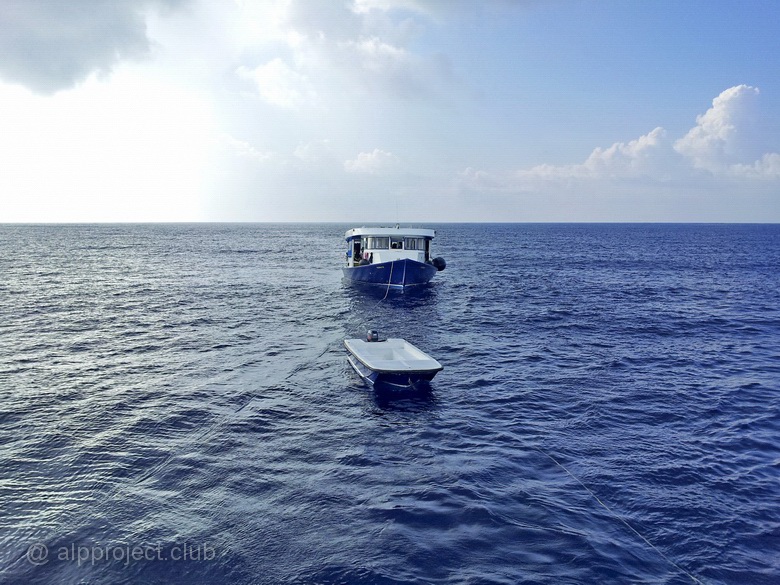
Maldives. When the head like a hammer
From the book "Straight to the South", part 2 "Shark archipelago", episode 13.
| 14.03.2018 | 0°26'43.30"N 73°34'46.50"E |
Our stay in the Huvadhu have been completed by two very unique dives. We started at opposite of the Maafushi island after barrier of lagoon in the open ocean. Nothing happen, we dive to the depth and hung there for a long time, it was empty, it seemed that we were here for nothing. But suddenly a huge fish came out to us from below, the hammerhead shark, 4 meters in length, not less.
These perhaps the most ancient of species of fish live in packs. The jamb consisting of mothers and babies is in motion constantly, and young males provide safety - prowl round and take away the family aside in case of danger. So such a guard sniffed us. He doesn't come close, we shot him, but he is barely visible in photos because darkness in the early morning at a depth..
Inspired by this we did the second dive there again. And we didn't lost – a flock of hammerhead sharks passed us.. It is prohibited to dive below thirty meters in the Maldives, but they were a little deeper and they had impressive sizes, and we were able to see them and even shot a little, the moment lasted for 2-3 minutes. However, the photos are not good:
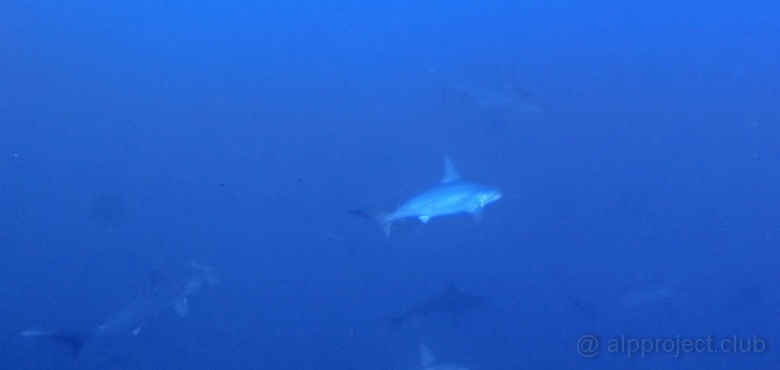
Maldives. Giant shark
From the book "Straight to the South", part 2 "Shark archipelago", episode 12.
| 13.03.2018 | 0°42'40.10"N 73°22'41.37"E |
At night they set the lamp on the foredeck of our ship and we can see as trifle fish and plankton curl in its light attracting those who eat them. And here you are, we've been woken by a knock at the cabin door at 3am: "Shark!". Indeed, here it is, at arm's length from the boat.. Young, a little over three meters in length, but the real whale shark!
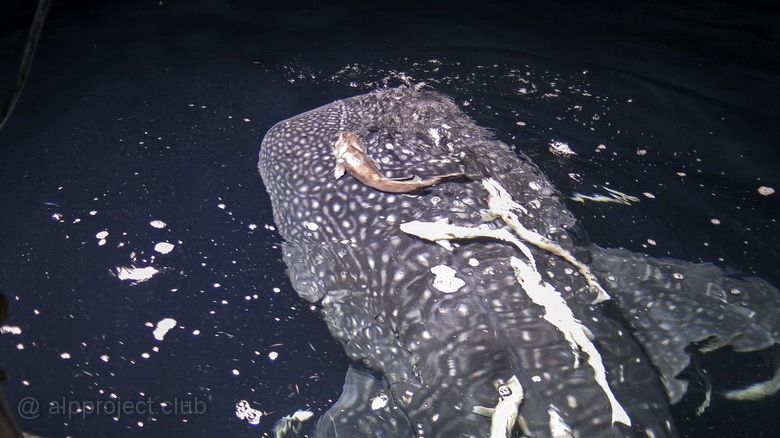
Page 3 of 11


